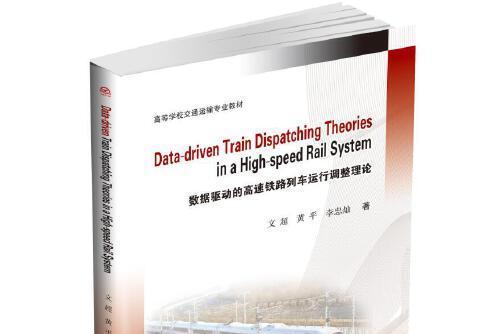《Data-driven Train Dispatching Theories in a High數據驅動的高速鐵路列車運行調整理論》是一本西南交通大學出版社出版的圖書,作者是文超,黃平,李忠燦。
基本介紹
- 書名:Data-driven Train Dispatching Theories in a High數據驅動的高速鐵路列車運行調整理論
- 作者:文超、黃平、李忠燦
- 出版社:西南交通大學出版社
- ISBN:9787564373030
內容簡介,圖書目錄,
內容簡介
The large-scale construction and operation of the high-speed railway have achieved remarkable results in improving the scale and quality of network, alleviating the tightness of the transportation capacity, and enhancingthe quality of transportation services. Railwayhas played an important supporting role in sustained and rapid development of national economy. Chinese high-speed railway has entered an era of a large-scale network operation characterized by high speed, high density, high traffic volume, and the complexity of the transportation organization has ranked numberone all over the world.
High security, high speed, and high density arethe competitive advantages that high-speed railways become more and more popular among passengers. At the same time, passengers are paying greater attention to the operational reliability of high-speed railways. Under the premise of safety, providing reliable quality and excellent services is the primary task during the development of the railway transportation industry. However, the train encounters a large number of random disturbances during operation, which cause the delays. The anti-interference capacityof the timetable and the delay recovery ability after adisturbance directly affect the service quality of high-speed railway. The exclusivity and competitiveness associated with the use of railway transportation resources mean that such delays will havecumulative effects (horizontal and vertical) and networked propagation characteristics. The horizontal propagation of atrain delay will affect the operation of subsequent trains (possibly delay them). Vertical propagation may delay trains at subsequent stations. Serious delays may spread over a large area of the line and local railway network, affecting the normal execution of the train's operation plan and reducing the quality of transportation services.
圖書目錄
Chapter 1 Train dispatching management with data-driven approaches: A comprehensive review and appraisal
1.1 Introduction
1.2 Data-driven train dispatching
1.3 Data-driven models in train dispatching: Literature
1.4 Review results and further discussions
1.5 Conclusions
Chapter 2 Data-driven delay distributions of HSR trains
2.1 Statistical Investigation on Train Primary Delay based on Real Records: Evidence from Wuhan-Guangzhou HSR
2.2 Statistical Delay Distribution Analysis on High- Speed Railway Trains
2.3 Temporal and Spatial Distributions of Primary Delays in a High-Speed Rail System
Chapter 3 Data-driven delay propagation mechanism on horizontal
3.1 Cause-specific Investigation of Primary Delays of Wuhan-Guangzhou HSR
3.2 Modelling of Effects of Primary Delays Using High- speed Train Operation Records
3.3 Modelling the influence of disturbances for real-time train dispatching
Chapter 4 Data-driven delay propagation mechanism on vertical
4.1 A hybrid model to improve the train running time prediction ability during high-speed railway disruptions
4.2 A Spatiotemporal Deep Learning Framework for Train Delay Prediction in High-speed Railway Systems
Chapter 5 Confliction management of HSR
5.1 Modelling high-speed trains using triangular fuzzy number workflow nets
5.2 Predicting high-speed train operation conflicts using workflow nets and triangular fuzzy numbers
Chapter 6 Delay recovery and Supplement time allocation
6.1 Forecasting Primary Delay Recovery of High-Speed Railway Using Data-driven Methods
6.2 A data-driven time supplements allocation model for train operations on high-speed railways
References

